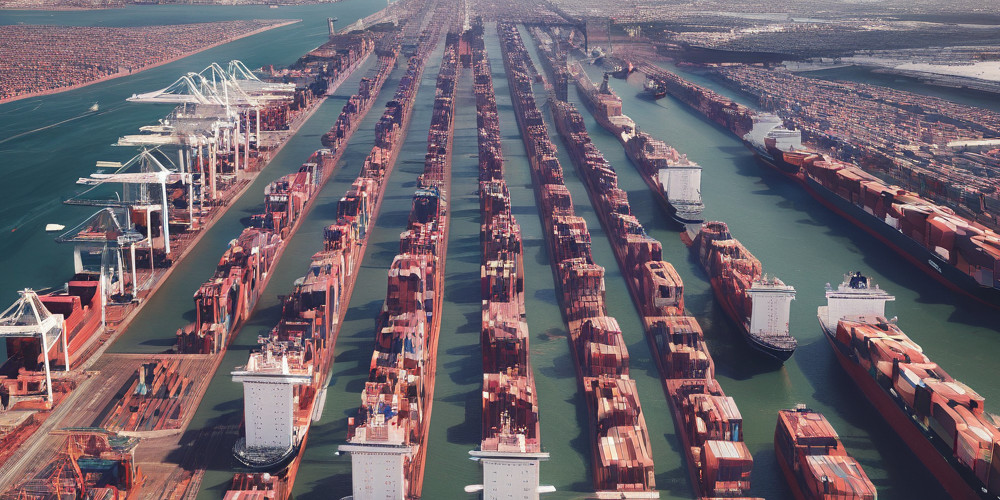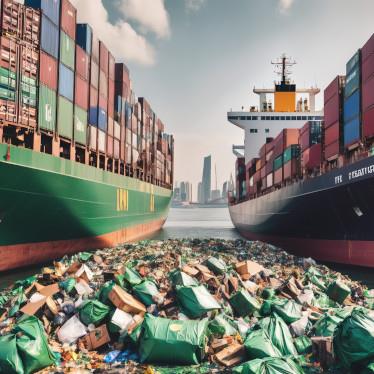
The world's largest ports serve as crucial hubs for international trade, connecting continents, countries and cities. These massive gateways manage billions of tons of cargo every year, playing a crucial role in the global economy. Let's take a look at the world's largest ports.
1. Shanghai Port, China
The Port of Shanghai is the largest port in the world. Located at the mouth of the Yangtze River, it serves as a critical crossroads for access to China's vast inland regions and international markets. The port is renowned for its advanced technology and massive scale, capable of handling the world's largest container ships. It is a bustling commercial center where a wide range of goods are traded, from raw materials to finished goods.
2. Port of Singapore
The Port of Singapore is not only a testament to the country's economic triumph, but also a strategic maritime node in Southeast Asia. Known for its efficiency and speed in cargo handling, it facilitates the seamless movement of goods between East and West. Its strategic location and state-of-the-art facilities make it an important link in the global supply chain.
3. Ningbo-Zhoushan Port, China
Connecting the ports of Ningbo and Zhoushan, this port complex is characterized by significant container shipping operations as well as handling bulk commodities such as iron ore and crude oil. The port's vast water depth accommodates some of the largest ships in the world, making it a major player in international trade and logistics.
4. Shenzhen Port, China
Located in the Pearl River Delta, Shenzhen Port is one of the busiest and fastest growing ports in the world. It serves as an important gateway for China's foreign trade, especially with the booming economic regions of Hong Kong and Guangdong Province. The port is known for its high efficiency and capacity to handle a wide range of cargo types.
5. Port of Rotterdam, Netherlands
The Port of Rotterdam is Europe's largest port and a vital transit point for goods entering and leaving the European continent. Known as the “gateway to Europe”, the port has state-of-the-art facilities and logistics services, making it an important node in the European supply chain. Its strategic location and depth can accommodate even the largest ships in the world.
6. Port of Guangzhou, China
As one of the most important transportation hubs in South China, Guangzhou Port plays a key role in international trade, especially with Southeast Asia and the rest of the world. It is recognized for its comprehensive port services and capabilities in handling various types of cargo.
7. Busan Port, South Korea
Busan Port is the busiest and largest port in South Korea. It is a critical link in maritime trade, connecting the Pacific and Eurasian trade routes. The port is particularly well known for its container handling capacity and has been instrumental in South Korea's economic development.
Economic Impact of these Ports
These ports are not just physical places where goods are transferred; they are also dynamic ecosystems that contribute significantly to the economic growth of their countries. They facilitate trade, create jobs and attract investment. They are also crucial to the efficiency of global supply chains, ensuring that goods move seamlessly from producers to consumers around the world.
Future Trends
The future of these ports looks to sustainability and innovation. As global trade volumes continue to grow, these ports are investing in green technologies, automation and advanced logistics to stay competitive and reduce their environmental impact. The emergence of smart ports using data analytics and IoT (Internet of Things) will revolutionize the way ports operate, making them more efficient, secure and sustainable.
The world's largest ports are the lifeblood of global trade, bridging different markets and cultures. Their size and trade volumes are testament to their importance in the global economy. As the world continues to globalize, these ports will remain at the forefront, driving economic growth and facilitating the exchange of goods across continents.


